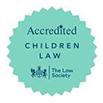Guidance for Care Homes receiving COVID-19 patients as “designated settings” – how will CQC inspect your service?

Guidance for Care Homes receiving COVID-19 patients as “designated settings” – how will CQC inspect your service?
OVERVIEW
- On 21 October 2020, the Department of Health and Social Care (DHSC) published a letter to local authorities stipulating a new requirement for COVID-19 patients being discharged into or back into a registered care home setting to be discharged into an appropriate designated setting (i.e. that has the policies, procedures, equipment and training in place to maintain infection control and support the care needs of residents) and be cared for there for the remainder of the required isolation period.
- The designation scheme applies to care homes that provide accommodation for people who need personal or nursing care, including registered residential care and nursing homes for older people, people with dementia, and people with learning disabilities, mental health and/or other disabilities and older people
- Designated settings are nominated by local authorities in consultation with care providers, and are inspected by the Care Quality Commission (CQC) to ensure that they are appropriate to receive COVID-19 patients.
INTRODUCTION
As part of the Government’s Adult Social Care Winter Plan published on 18 September 2020, the DHSC has implemented a scheme in collaboration with CQC to provide dedicated care locations or ‘designated settings’ to allow the safe discharge of COVID-19 positive patients into or back into a registered care home setting for the remainder of their required isolation period. The scheme is intended to run over the winter period with the aim of preventing the spread of COVID-19 in care homes, enabling COVID-19 positive people to receive the care that they need and also to free up much needed hospital beds.
Designated settings are identified by local authorities in consultation with care providers, and are inspected by CQC to ensure that they are appropriate to receive COVID-19 positive people. The Government’s aim is for each local authority to have access to at least one designated setting as soon as possible. Additionally, local authorities have also identified NHS settings, known as “alternative settings”, in agreement with local NHS partners to fulfil the role of designated settings. The DHSC has stated that the costs of the designated settings will be met through the £588 million discharge funding until the end of March.
PEOPLE AND CARE HOMES AFFECTED
The DHSC has stated that the designation scheme applies to care homes who provide accommodation for COVID-19 positive people who need personal or nursing care, including registered residential care and nursing homes for older people, people with dementia, and people with learning disabilities, mental health and/or other disabilities and older people.
The following cohorts are excluded from the designation scheme:
- people who have contracted COVID-19 within the care home
- people using emergency departments who have not been admitted to hospital
- people living in their own home, including sheltered and extra care housing or living in supported living.
REQUIREMENTS FOR DESIGNATION
The DHSC requires that designated settings:
- must meet the CQC’s standard of infection prevention control
- must meet CQC registration requirements and not be in breach of regulation
- should provide a service that is rated ‘good’ or ‘outstanding’. If the service is rated as ‘requires improvement’ with no breach of regulation, CQC will assess this on a case-by-case basis
Care home providers should also ensure they have sufficient insurance cover to provide the services. Providers who cannot obtain sufficient cover should notify their local authority and/or CQC contacts.
DHSC also has further expectations regarding infection prevention control and clinical support, including that there should be adequate separation (zoning) of the designated setting and that the setting must accommodate each individual in the setting in their own room.
CQC INSPECTIONS OF DESIGNATED SETTINGS
In respect of inspections of designated settings, CQC is using its Infection Prevention Control (IPC) framework, which is being used on all care home inspections, with additional specific elements focused on: checking if services are physically separating Covid positive residents; whether a dedicated workforce is in place; and ensuring that there is a high level of ventilation. CQC will prioritise inspections in local authorities in tier 2 or tier 3.
The locations are inspected against eight areas and reported with ‘eight ticks’ on IPC and are intended to give the public an overview on whether:
- Adequate PPE is available for staff and residents to control infection safely
- Staff are properly trained to deal with outbreaks and the proper procedures are in place
- Shielding and social distancing are being complied with
- Layout of premises, use of space and hygiene practice promote safety.
The eight areas that are assessed during an IPC inspection are listed below (key line of enquiry S5). CQC judges each area as ‘assured’, ‘somewhat assured’ or ‘not assured’ by the provider of the service. Please refer to CQC’s ‘Adult social care inspection information gathering tool: infection prevention and control’ for further information and guidance for inspections (here).
- Visitors - whether all types of visitors are prevented from catching and spreading infection
- Shielding - whether shielding and social distancing rules are followed
- Admission - whether people are admitted into the service safely
- Use of personal protective equipment (PPE) - whether the service uses PPE effectively to safeguard staff and people using the service
- Testing - whether there is enough access to testing for staff and people using the service.
- Premises - whether the layout of the premises, the use of space and the hygiene practice promotes safety
- Staffing - whether staff training, practices and deployment show the service can stop the transmission of infection and manage outbreaks
- Policies - whether IPC policy is up to date and implemented effectively to prevent and control infection.
According to the CQC, the key reasons where a setting did not pass the CQC assurance process following inspection are:
- Location unsuitable – e.g. not enough separation between designated bit of service and the rest of the care home
- Location not ready - e.g. significant building work planned and impossible to assess until this is complete
- Staffing - no designated staff team to work exclusively in the designated setting.
CQC’s judgements following IPC inspections can be found on the profile page for care homes that have been assessed and are also published in inspection reports. An example of a CQC IPC inspection report is available on CQC’s website for Gorsey Clough Nursing Home (here) which was recently inspected by CQC following identification as a designated setting by the relevant local authority. CQC were assured that this service met good infection prevention and control guidelines as a designated care setting.
NUMBERS OF DESIGNATED SETTINGS
As of 8th December, there were 117 CQC IPC assured designated settings within 90 local authorities and a further 28 alternative settings. CQC will provide a weekly update of assured designated locations on its website. CQC has also recently published data regarding the numbers of approved settings across regions in its Covid Insight 6 report (here). The data shows that there is a wide regional variation in these numbers, for example, the lowest figure of designated beds per 100 care home beds is in the South East and the highest figure is in London.
CONCLUSION
The designation scheme appears to be progressing well, however, there are concerns from the sector regarding the lack of operational detail as well as difficulties with obtaining the necessary indemnity insurance.
Another aspect that remains unclear is whether CQC will carry out repeat inspections of designated settings. In view of the fact that these settings are necessarily highly infectious, and house vulnerable populations, it is likely that CQC will carry out follow-up IPC inspections to avoid any lapses in the complex requirements that ensure operational integrity and limit the spread of infection.
FURTHER READING
By accepting you will be accessing a service provided by a third-party external to https://www.scomo.com/









